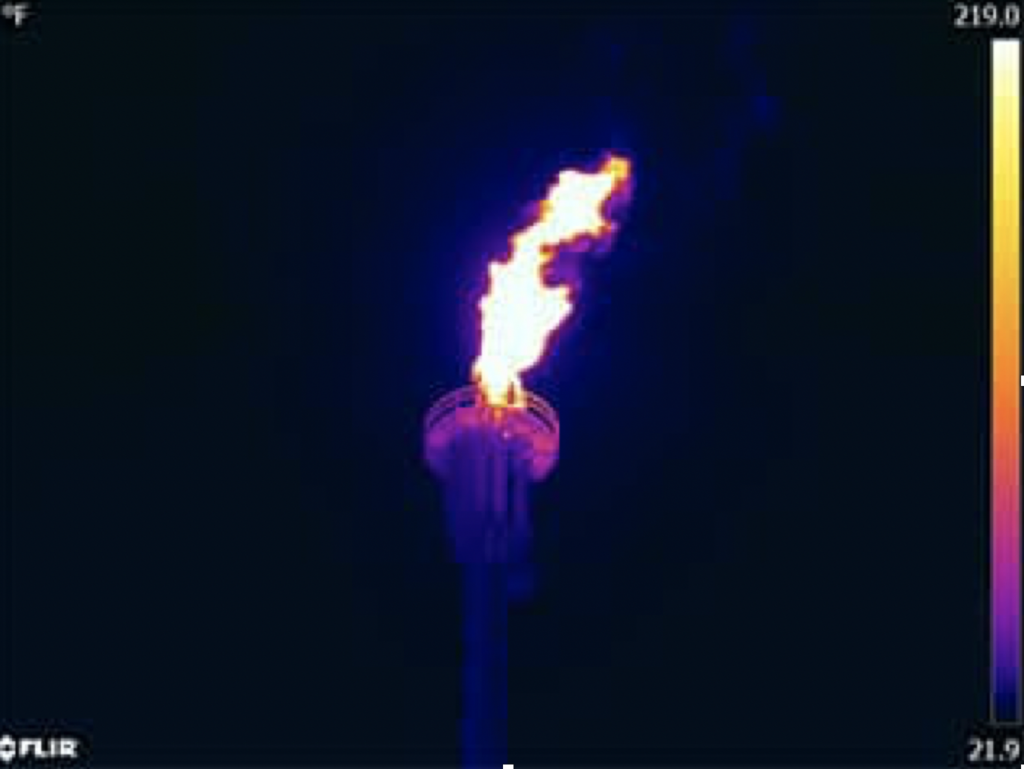
There are a range of flare monitoring systems to detect and alarm if the flare is unlit. Each technology utilises a feature of the flare such as heat or light.
In some countries, to comply with environmental regulations it is essential to confirm that the main flare or pilot flare always remains lit.
Where a flare is unintentionally unlit the methane emissions are much higher than reported based upon flow rates.
Thermal Imaging systems use infra-red cameras to monitor the optical signature from the lit flare. Changes can be used to trigger visual and audible alarms. They are robust against adverse weather conditions and can be operated from ground level, minimising the need to access the flare for maintenance. Some systems also provide quantitative estimation of temperature.
Where cold flares are in operation (where emissions can vary between vented gas and combusted gas) the inclusion of alarm systems can help identify what operating state the system is in.
Flame status can be determined by several means including monitoring heat, ionized gas, light or sound. To give constant feedback of pilot status one of the following systems will need to be used:
Whilst standards such as API 537 require the use of pilots in the flare, there are a large number of older facilities that operate without pilots.
For choosing properly the flame monitoring system, it is important know if it will supervise a pilot flame or a flare flame.
| Technology |
Individual pilot |
Ground level Maintenance |
Instantaneous response |
| Thermocouple |
X |
X |
|
| Fiber Optic |
X |
X |
X |
| Optical at grade |
X |
X |
|
| Acoustic |
X |
X |
|
| Flame ionization |
X |
X |
Advantages
Easy to install and maintain
Operate from grade-level, no need to access the flare
Quantitative output on heat can be useful for other maintenance requirements
Some systems are designed to be intrinsically safe allowing them to be located in high hazard areas
Some systems include capability for assessing combustion efficiency
Limitations
Cannot always distinguish between pilot or main flare and therefore used primarily for monitoring the flare as a system, not just the pilot
Requires adequate line-of-sight to the flare tip and combustion zoneThe area of the flare flame where the gas and vapours found just after a flare tip combine for combustion. Elevated Flare definitions and calculation methods from 40 CFR 63... Learn more...
Case study
Case study to be added in the future
There are a range of flare monitoring systems to detect and alarm if the flare is unlit. Each technology utilises a feature of the flare such as heat or light. Alarms provide a near real-time alert that conditions in a flare have fallen outside of a predetermined threshold - such as when crosswinds or intermittent flow have led to a flare extinguishing. An unlit flare is a more significant source of methane and a more potent source of greenhouse gases as none of the gas is being converted to carbon dioxide.